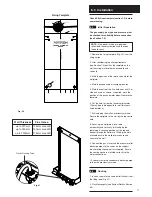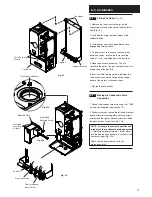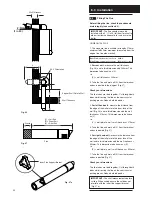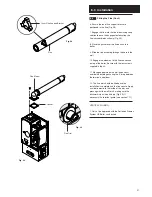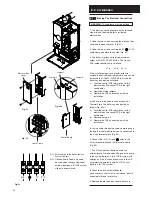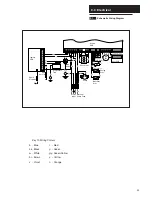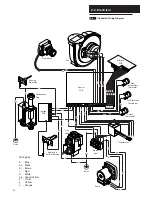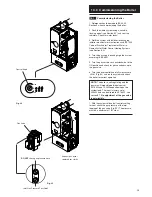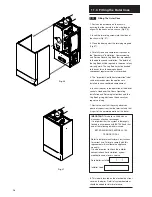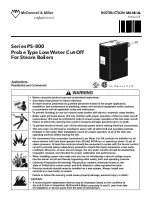
7.0 Site Requirements
12
7.1
Information
WARNING
- Check the information on the data
plate is compatible with local supply conditions.
1. The installation must be carried out by a CORGI
Registered Installer or other registered competent
person and be in accordance with the relevant
requirements of the current
G
AS
S
AFETY
(Installation
and Use)
R
EGULATIONS
, the
B
UILDING
R
EGULATIONS
(Scotland)(Consolidation), the
L
OCAL
B
UILDING
R
EGULATIONS
, the current
I.E.E. W
IRING
R
EGULATIONS
and the bye laws of the
L
OCAL
W
ATER
U
NDERTAKING
.
Where no specific instruction is given reference should
be made to the relevant
BRITISH STANDARD
CODES OF PRACTICE
. For Ireland install in
accordance with IS 813 “I
NSTALLATION OF
G
AS
A
PPLIANCES
”. Reference should also be made to
B
RITISH
G
AS
G
UIDANCE
N
OTES
F
OR
T
HE
I
NSTALLATION OF
D
OMESTIC
G
AS
C
ONDENSING
B
OILERS
.
7.2
B.S. Codes of Practice
Standard
Scope
BS 6891
Gas Installation.
BS 5546
Installation of hot water supplies for
domestic purposes.
BS 5449 Part 1
Forced circulation hot water systems.
BS 6798
Installation of gas fired hot water boilers.
BS 5440 Part 1
Flues.
BS 5440 Part 2
Ventilation.
BS 7074
Expansion vessels and ancillary
equipment for sealed water systems.
BS 7593
Treatment of water in domestic hot water
central heating systems.
WARNING
- The addition of anything that may
interfere with the normal operation of the appliance
without the express written permission of Potterton
could invalidate the appliance warranty and infringe
the
G
AS
S
AFETY
(Installation and Use)
R
EGULATIONS
.
7.3
Clearances
(Figs. 12 &13)
1. A flat vertical area is required for the installation
of the boiler.
2. These dimensions include the necessary
clearances around the boiler for case removal,
spanner access and air movement. Additional
clearances may be required for the passage of
pipes around local obstructions such as joists
running parallel to the front face of the boiler.
3. For unventilated compartments see Section 7.5.
7.4
Location
NOTE:
Due to the nature of the boiler a plume of
water vapour will be discharged from the flue. This
should be taken into account when siting the flue
terminal.
1. The boiler may be fitted to any suitable wall with
the flue passing through an outside wall or roof and
discharging to atmosphere in a position permitting
satisfactory removal of combustion products and
providing an adequate air supply. The boiler should
be fitted within the building unless otherwise
protected by a suitable enclosure i.e. garage or
outhouse. (The boiler may be fitted inside a
cupboard - see Section 7.5).
2. If the boiler is sited in an unheated enclosure
then it is recommended to incorporate in the system
controls a suitable device for frost protection.
3. If the boiler is fitted in a room containing a bath or
shower reference must be made to the current
I.E.E. W
IRING
R
EGULATIONS
and
B
UILDING
R
EGULATIONS
. If the boiler is to be fitted into a
building of timber frame construction then reference
must be made to the Institute of Gas Engineers
document UP 7.
200mm
850mm
490mm
200mm
5mm Min
5mm Min
5mm
500mm
For Servicing
Purposes
Fig. 12
Fig. 13
In Operation
3°
(1 in 20)
325mm

















